Powder Sunscreen Effectiveness and Dermatologist's Tips

Powder sunscreen effectiveness is a hot topic right now. You are seeing new products hit the market. But what exactly is powder sunscreen, does it work to sun protect your skin and how do you use it?
Powder sunscreens have their place as a useful form of sunscreen – but the devil is in the details of what else is in the product and how you use it.

As a dermatologist, I have steered people away from powder sunscreens for years. That’s because we did not have enough information about the effectiveness or safety of powder sunscreens. Even the FDA still says that powder sunscreens need more study and data to determine if they can be recommended. So, what’s the deal? Are powder sunscreens really safe, and if so, how do you use them correctly?
The 7 benefits of powder sunscreens
- Powder sunscreens certainly are convenient.
- They are portable and easy to throw in your purse or pocket.
- They have a brush for applying product to your skin meaning you finally have a good way to apply sunscreen without getting your hands messy.
- They are ideal for re-applying facial sunscreen without smearing your makeup. This has been a dilemma for those that wear makeup. With powder SPF you can easily refresh your sunscreen at the same time that you freshen up your makeup.
- Powder sunscreen feels ultra-light weight on your skin and never looks shiny or streaky.
- Powder sunscreen absorbs oil and helps control shine. It is also ideal for acne-prone complexions because powder sunscreens are non-comedogenic and won’t clog pores.
- Powder sunscreens are often perfect for people with sensitive skin because mineral zinc oxide and titanium dioxide are hypoallergenic and non-irritating for even the most sensitive skin types. Liquid sunscreens have complex bases made of many ingredients and powder sunscreens tend to be simpler and mostly hypoallergenic. Be careful though because other ingredients in the powder sunscreen products may be problematic such as fragrance, botanical ingredients, some other minerals and dyes.
What are powder sunscreens?
Powder sunscreens are sunscreen powder ingredients mixed with other dry powder ingredients.
Mineral sunscreen powder - the active ingredients in powder sunscreens are mineral UV filters.

Mineral powders are hypoallergenic, safe for sensitive skin, well proven and provide reliable sun protection for your skin.
The two mineral sunscreen filters are:
- Zinc oxide: this is the best sunscreen UV filter in my opinion. It provides broad spectrum protection against UVB and UVA.
- Titanium dioxide blocks UVB well but only weakly blocks some of the UVA rays (which play a big role in wrinkle formation and are out all day including before 10am, after 3pm and in the winter). I never recommend purely titanium dioxide sunscreens. I only recommend titanium dioxide when it is combined with zinc oxide.
Mineral zinc oxide and titanium dioxide are actually powders and powder sunscreen formulations capitalize on the powder nature of the minerals to create a brilliant form of sunscreen. - Dermatologist Dr. Bailey

These are mixed with other powder ingredients which often include iron oxide (a great ingredient because it helps blocks visible light that can contribute to skin pigment problems such as melasma), mica (creates sparkle and glow), silica, and powder forms of antioxidants, vitamins and botanicals.
Some powder sunscreens contain starch powders, bismuth, aluminum, preservatives, scant amount of oil or siloxanes (in the silicone family), and glycerin among other ingredients. I like to keep formulations as simple as possible, especially with a product we may inhale, such as a spray or powder sunscreen – more on that below.
I like to keep skin care product formulations precise and targeted to avoid unnecessary adverse reactions, that includes powder sunscreens. - Dermatologist Dr. Cynthia Bailey
Tinted powder sunscreens can be used like mineral makeup to soften complexion flaws and mattify oily shine.
Where can you use powder sunscreen?
You can apply them on any exposed skin. They are especially useful to sun protect,
- your scalp and part-line where hair is thin,
- the back of your hands,
- your ears, neck and chest,
How effective are powder sunscreens?
Do they work? Why is the FDA wanting more information and study before considering them safe?
This is the most important point to understand with powder sunscreens – they are difficult to apply correctly, it is hard to get enough on your skin for sufficient sun protection.
In my opinion as a dermatologist, you should only use powder sunscreens on top of your regular sunscreen to enhance and refresh UV protection!
Use a powder sunscreen as a second layer of protection on top of a liquid broad spectrum SPF 30+ sunscreen. That’s because UV skin sun protection depends on putting enough product on and you CANNOT tell how much powder is dispensed from a powder sunscreen applicator. Plus, putting enough powder sunscreen would leave your skin looking really powdered. - Dermatologist Dr. Cynthia Bailey
You also can't get an even application of powder sunscreen because powder application is erratic, the powder is really light and it disperses unevenly across your skin. It’s simply not possible to get perfect powder sunscreen coverage to achieve the SPF 20, 30 or 50 that’s labeled on the product.
For example, we know that to use sunscreen correctly:
-
 You need ¼ tsp of liquid sunscreen cream, lotion or gel for your face. That’s a dollop the size of a nickel.
You need ¼ tsp of liquid sunscreen cream, lotion or gel for your face. That’s a dollop the size of a nickel. - The shot glass amount (1 ounce or 2 tablespoons) is needed to protect the body of an adult in a swim suit.
You then need to reapply this same amount every 2 hours, after sweating, swimming or rubbing product off of your skin. Powder sunscreen is a great alternative for reapplication in areas of your skin where powder makes sense.
How do you apply powder sunscreen?
Powder sunscreens come attached to a built-in brush applicator.
 Step 1: Prime the applicator by facing the brush down tap a few times to be certain powder is flowing into the brush bristles.
Step 1: Prime the applicator by facing the brush down tap a few times to be certain powder is flowing into the brush bristles.
Step 2: Pull down the brush sleeve and check that powder has flowed into the bristles.
Step 3: Brush the powder sunscreen onto your skin using small circular motions to cover all of the exposed skin.
- You need to make 2 passes for a total of 60 seconds.
- During this 60 second application, you need to re-prime the brush against your hand or with the cap closed about 4 times to be certain powder is still flowing.
When applying powder sunscreen – hold your breath!
Yep, don’t inhale. It seems a little crazy, but you don’t need powder in your lungs.
Dermatologist’s tips for application of powdered sunscreen
 Sunscreen goes on top of your Complete Skin Care Routine, which is CLEANSE, CORRECT, HYDRATE and PROTECT. Sunscreen is Protect.
Sunscreen goes on top of your Complete Skin Care Routine, which is CLEANSE, CORRECT, HYDRATE and PROTECT. Sunscreen is Protect.
- Apply all of your skin care products for these steps and top your skin with a mineral zinc oxide liquid sunscreen.
- If you wear makeup, that goes on top of your liquid sunscreen.
- Let your skin dry entirely so your products are set. This prevents your powder sunscreen from streaking and keeps your brush free from product residue.
- Apply your powder sunscreen and reapply powder sunscreen every 2 hours.
Why do you need to reapply sunscreen every 2 hours?
 It is easy to understand that sunscreen comes off of your skin with rubbing, sweating, swimming and toweling dry.
It is easy to understand that sunscreen comes off of your skin with rubbing, sweating, swimming and toweling dry.
What’s not obvious about sunscreen is that after it is applied to your skin it migrates and moves leaving some areas exposed to UV rays.
Plus, as your pores pump out oil this also causes product to migrate.
To understand product migration, think of how many times you have seen makeup crease into smile lines or eyelid creases. Have you noticed how mineral sunscreens that are whitish will end up concentrated in the creases of your elbows or neck? The same is true of invisible sunscreens. Those concentrated areas in the crease came from somewhere and it’s the adjacent skin that is now exposed!
Thus, you need to reapply an even coat of sunscreen to maintain an even protective layer of SPF, and powder is a convenient way to refresh your sunscreen throughout the day.
Sunscreen filters also break down as they protect you from UV rays. This is particularly true with chemical sunscreen filters. Yes, there has been technological headway in photostability of chemical sunscreens, but they still break down and you definitely need to reapply sunscreen when you are depending on it to protect your skin. This is especially true for intense and sustained UV exposure – like a day at the beach.
The bottom line is that you really do need to reapply sunscreen to maintain UV protection.
This is what makes powder sunscreens so popular – they are the most convenient way to reapply facial sunscreen.
What are the 2 most common powder sunscreen mistakes?
#1. Using powder sunscreen alone instead of on top of a really good broad spectrum SPF 30+ liquid sunscreen.
- Cream, gel, and lotion sunscreens apply more evenly and you can gauge the amount you apply to your skin to be certain that you are applying enough.
- Use powder sunscreen only as a supplement to boost SPF or to refresh SPF during the day as a touch up.
#2. Uneven application of powder sunscreen.
It’s hard to know how much powder comes out of the brush as you are applying powder sunscreen. This is why you never want to rely on powder sunscreen alone for sun protection.
Is powder sunscreen safe?
My opinion as a dermatologist is, that if properly applied, powder sunscreen is a safe and effective way to refresh an initial coat of sunscreen cream, lotion, gel or spray. - Dermatologist Dr. Cynthia Bailey
The FDA is wanting more information on powder safety before issuing final regulations on powder sunscreens. We will see what the final ruling states.
The biggest problem with UV protection of powder sunscreen as I see it is that the protection entirely depends on how well you apply it – and that’s hard to judge. The good news is that if you look at your skin and it has some tan, you know you did not put your sunscreen on well enough and you need to tweak your application.
My biggest concern with powder sunscreens in inhaling the particles.
Certainly, we don’t want to inhale nano-particle mineral sunscreens. Be certain your powder sunscreen is not made with nano particle UV filters. I’m also concerned with some of the other ingredients I see in some products and prefer they not be inhaled.
As with all powder or airborne products, I recommend holding your breath while applying the product then stepping forward out of the powder or airborne droplets before taking a breath.
3 most important things to look for in a powder sunscreen formula
- You want a product with mostly zinc oxide supplemented with titanium dioxide in a non-nano particle size.
- The powder sunscreen should boast an SPF of 30+ and clearly state that it provides broad spectrum protection.
- Ideally the product should contain iron oxide at a concentration over 3.2% because at that amount it can block visible light rays capable of contributing to pigment problems such as melasma.
 Most products won’t tell you how much iron oxide is in a product. My Sheer Strength Pure Physical SPF Refresh Sunscreen has over 3.2% iron oxide.
Most products won’t tell you how much iron oxide is in a product. My Sheer Strength Pure Physical SPF Refresh Sunscreen has over 3.2% iron oxide.
I prefer that the rest of a powder sunscreen formulation be simple. Powder antioxidants and vitamins are nice but ingredients such as starch powders, bismuth, aluminum, preservatives, scant amount of oil or siloxanes (in the silicone family) are not totally necessary in a powder product in my opinion. You can make a really nice, high performing, powder sunscreen without those ingredients. Given that some of the powder will inevitably be inhaled, I like to keep the formulation simple. If you love a particular product that contains these ingredients, that's fine. If you are shopping for a powder sunscreen for the first time, I recommend picking one with a targeted formulation.
Dermatologist's tips for how to create a Complete Skin Care Routine that includes powder sunscreen
I've created well over 100,000 skin care routines for my patients and I've learned that the important 'active' ingredients that you want your skin to absorb are best applied during the CORRECT and HYDRATE steps in your skin care routine; ingredients applied to freshly cleansed skin have the optimal opportunity for percutaneous absorption and you see that in your results. Apply a liquid sunscreen and top of your CORRECT and HYDRATE step. Top it with makeup and then a powder sunscreen.
Keep your sunscreen powder formulation simple and focus on UV protection and how the product looks on your skin. That’s really all that this type of product can accomplish and you want it to do that perfectly. Don't be drawn to claims of ingredients that "nourish" or somehow benefit skin in a powder sunscreen formulation. Save those ingredients and products for your CORRECT and HYDRATE steps.
The bottom line, Dermatologist Approved Powder Sunscreens:
Powdered sunscreens are a convenient way to boost your SPF and reapply sunscreen during the day. Only use products with a pretty simple ingredient list, apply them as I described above and don’t inhale while you apply it to your face. I personally love the hypoallergenic protection that my powder sunscreen provides for my sensitive complexion. Powdered sunscreens have finally arrived and have a place in smart skin care.


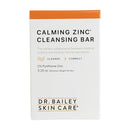
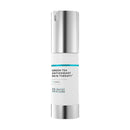
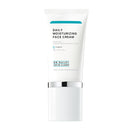
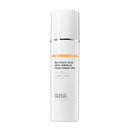
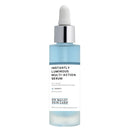

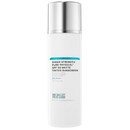
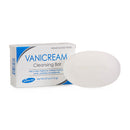
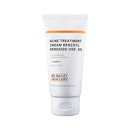
 You need
You need